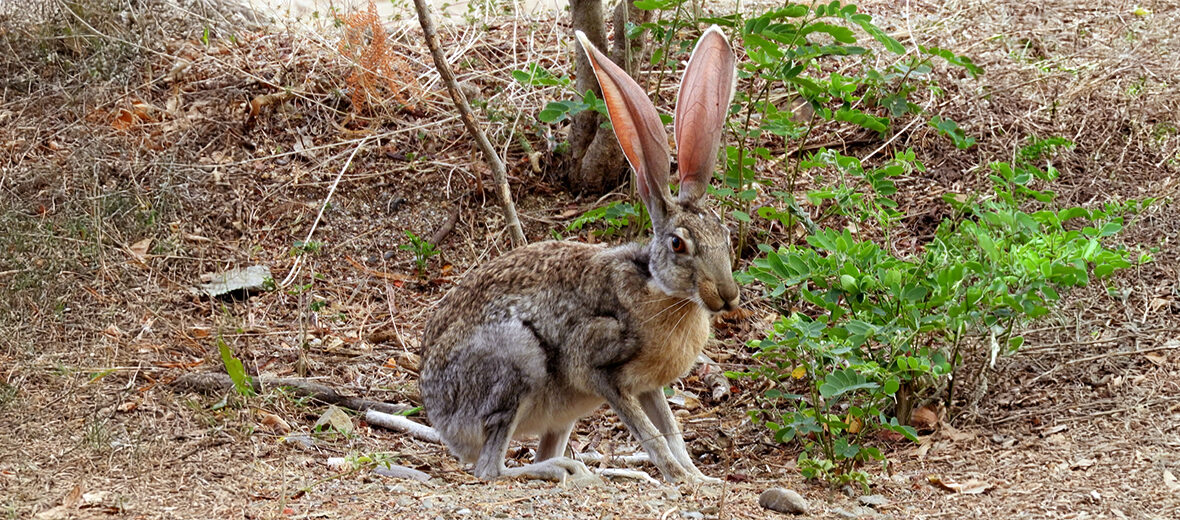
Thought of as the handsomest of the hare species, it’s the antelope jackrabbit, aka Allen’s hare, from Mexico and Arizona. These lagomorphs are among the last mammals discovered in North America. They face the threats of habitat loss at the hands of residential and commercial developments, agriculture, fires, and fire suppression efforts; hunting; trapping; and invasive species, that can result in predation and disease. However, they are abundant enough to be listed as Least Concern by the IUCN. Their population trend is listed as unknown.
First the Stats…
Scientific name: Lepus alleni
Weight: Up to 9 lbs.
Length: Up to 23 inches, plus up to a 4 inch tail
Lifespan: Up to 5 years
Now on to the Facts!
1.) There are 3 subspecies: L. a. alleni, L. a. palitans, and L. a. tiburonensis.
2.) Fossil evidence puts the genus Lepus in North America around 2.5 million years ago during the Pleistocene Epoch.
3.) These hares prefer habitats with large, desert shrubs above long grass, and barren desert habitats.
4.) Antelope jackrabbits dwell in locations with higher humidity.
5.) Their ears can grow to 7 inches.
But wait, there’s more on the antelope jackrabbit!
6.) They are both crepuscular (active at dawn and dusk) and nocturnal (active at night).
7.) Classified as folivores (eat leaves) and graminivores (eat grass), they graze on cacti, grasses, mesquite leaves, and other types of leafy vegetation.
Did you know…?
Besides occasionally eating soil – to get minerals and other nutrients – these hares also engage in coprophagy (eating their own specially produced feces).
8.) Breeding takes place pretty much year round, from December – September.
9.) Females undergo a gestation (pregnancy) of up to 6 weeks that yields up to 5 leverets each litter.
10.) A female can produce up to 4 litters per year.
But wait, there’s more on the antelope jackrabbit!
11.) Leverets are born precocial (self sufficient) with eyes open and fully covered in fur.
12.) Bobcats, coyotes, great horned owls, and golden eagles all prey on these hares.
13.) They are hunted for their meat and valuable pelt.
14.) Black-tailed jackrabbits coexist with antelope jackrabbits.
Now a Short Antelope Jackrabbit Video!
Be sure to share & comment below! Also, check out the Critter Science YouTube channel. Videos added regularly!

Want to suggest a critter for me to write about? Let me know here.
Some source material acquired from: Wikipedia & IUCN
Photo credit: Francisco Farriols Sarabia



